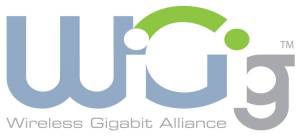The Wireless Gigabit Alliance (WiGig), the organization pushing for the worldwide adoption of 60GHz wireless technology, has announced the publication of its certification-ready multi-gigabit wireless specification. The newly completed version 1.1 of the specification addresses enhancements identified by member companies during the product development process.
Soon WiGig members will be able to test their WiGig-based products to ensure interoperability within the ecosystem and provide end users with reliable solutions at product launch. To be more specific, WiGig products will go into interoperability testing in Q4 2011, followed by actual products sometime next year, according to PC Magazine.
The WiGig Bus Extension (WBE) specification has also been published and is available to Adopter members. The WiGig Serial Extension (WSE) specification is still being finalized, and should be published to Adopters in the second half of this year. The WBE and WSE specifications enable high-performance multi-gigabit wireless connectivity among multiple devices.
"We are marching toward enabling the fastest wireless technology for practical applications such as Wireless Docking, Wireless Display and Wireless Networking," Dr. Ali Sadri, WiGig Alliance president and chairman, said in a statement. "Our continued diligence in the MAC-PHY specification development process and collaboration with the Wi-Fi Alliance to build an interoperable multi-gigabit wireless solution based on our latest specification will soon provide an unprecedented user experience that changes people's lives."
WiGig was announced on May 7, 2009, with the goal of eventually having WiGig chips inside everything from computers to handhelds to any type of consumer electronics so that large files can be transmitted wirelessly without latency issues. The completed version 1.0 WiGig specification, supporting data transfer rates of up to 7Gbps within a 10-meter range, was announced in December 2009. In May 2010, WiGig announced the publication of its specification, the opening of its Adopter Program, and the liaison agreement with the Wi-Fi Alliance to cooperate on the expansion of future Wi-Fi technologies.
